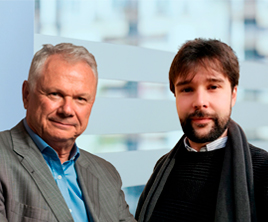The Opening of the Natural Gas Market in Brazil – The Path to Growth

Brazil has been rethinking its energy supply models in the context of greater diversity of sources and agents, climatic challenges and greater technological and market dynamism. The Federal Government has established that opening up the natural gas sector is central to redefining the Brazilian development trajectory.
After intense discussions within the scope of the “Gás para Crescer” program (launched in 2016), the process of opening up the natural gas sector in Brazil is resumed with the launch, this year, of the “Novo Mercado de Gás”. This strategy materialized from DL 9616/18, which captured the main aspects of Gás Para Crescer, Resolutions nº 4 and 16 of the National Energy Policy Council (CNPE) that established the principles and guidelines for creating a more sustainable environment. competitive and diversified along the different segments of the natural gas chain. In practical terms, the strategy is aimed at: (i) reorganizing the gas market; (ii) reduction of Petrobras' dominant role and; (iii) incentive to solve the challenges of gas distribution. Such measures open up considerable spaces for the emergence of new actors in the chain and with it a new sectoral organization that attracts investments.
In conjunction with the CNPE Resolutions, the Cessation Commitment Term (TCC) between Petrobras and CADE was presented as the fundamental piece of the puzzle for the resumption of this opening process. Thus, Petrobras agreed to sell its interests in transport (NTS, TAG and TBG) and distribution (through Gaspetro), in addition to serving as an agent responsible for the flexibility and balance of the system, acting as a supplier of last resort until the market itself can offer such services. Additionally, the guidance on negotiated access to essential infrastructure (drainage, UPGN and regasification) and Petrobras' commitment not to contract new volumes of gas will drive suppliers to seek new demand.
As for the challenges of distribution, it will be up to the States to voluntarily follow the guidelines presented by the CNPE. These are based on: (i) search for more robust and transparent regulatory principles of its agencies (creating them if necessary); (ii) tax harmonization between States for the full functioning of the market at the national level; (iii) privatization of natural gas concessionaires (which may bring tax benefits and new investments) and, when applicable, (iv) reassessment of existing concession contracts, adapting them to new times. The Federal Government recognized the importance of creating competition between the States so that each one establishes public policies aligned with its objectives and vocations, in particular the regulation of the Free Consumer, giving large consumers of natural gas the possibility of choosing their supplier. The states of Rio de Janeiro and Sergipe, through their Regulatory Agencies, took the lead in the process of opening up the natural gas market.
At the same time, the Congress discusses Law 6407/13, which should reflect the principles of the New Gas Market, promoting necessary changes to the existing regulations (the most important being the granting regime for the transport gas pipelines and the de-verticalization of their control ), bringing the necessary legal stability to the segment.
The opportunity to access new supplies through national gas production (in the pre-salt areas and in onshore) and greater diversity and competitiveness for imported gas (either from Bolivia and Argentina, or by LNG), together with changes in transport (entry and exit system) and competition between States in regulating the distribution of natural gas, allow us to glimpse a scenario in which we will have competitive natural gas as a driver fundamental to national development. On the other hand, what calls this opportunity into question are the uncertainties on the demand side. In this sense, electricity generation, considering the limited flexibility characteristics of natural gas from the pre-salt layer, can serve as an anchor in order to leverage the flow infrastructure and enable large-scale industrial use.
The construction of this new market has as its origin the verification of the development needs and the bottlenecks that the current model presents. In short, the modernization and evolution of the natural gas sector will place the country in a privileged position in terms of supply (either in volume or in the diversity of suppliers) and future demand (expansion of consumption and entry of new consumers), essential elements for that competition finally prevails in the natural gas market,
Luiz Carlos Costamilan is a mechanical engineer. Currently Executive Secretary of the IBP and partner of LC2 Consultoria, where he works advisory in the Oil & Gas sector for clients in Brazil and abroad.
Costamilan worked at the BG Group for 9 years. Prior to that, he worked at Petrobras for 23 years and held several senior positions, including Executive Manager of New Business, Executive Manager of Bolivia-Brazil Gas Pipeline Development, Executive Director of E&P, Executive Vice President of Braspetro and General Manager of Oil Production. Costamilan has served on the Boards of Directors of several companies in Brazil and abroad.
Felipe Botelho Tavares is a Natural Gas Specialist at IBP. He has worked in several research centers such as the Columbia Center on Sustainable Investment (CCSI), USA, the Energy Economics Group (GEE/UFRJ) [Brazil] and the Comissariat à l'énergie atomique (CEA) [France]. He is coordinator of the Sustainability Working Group at the Institute for New Economic Thinking (INET). Its work focuses on topics such as regulation, infrastructure financing, sustainable development, energy policy and planning.
